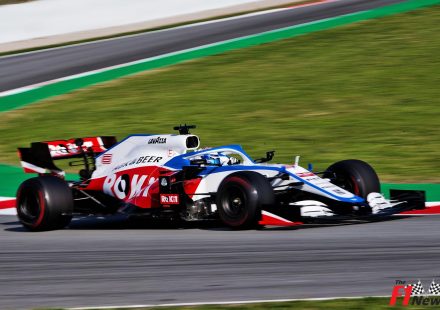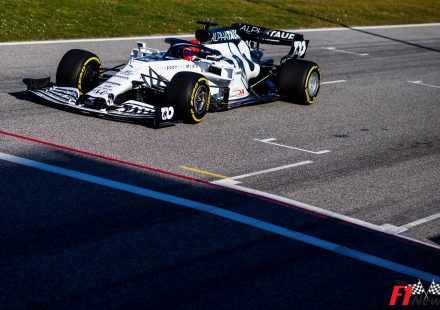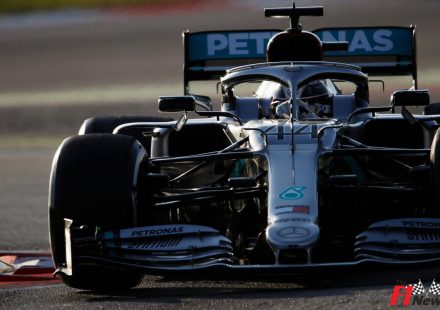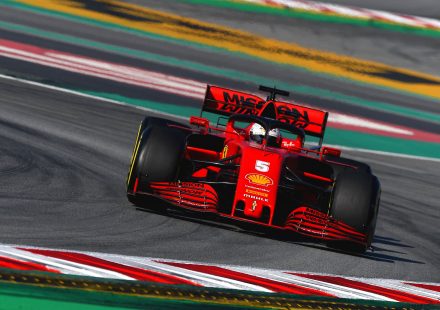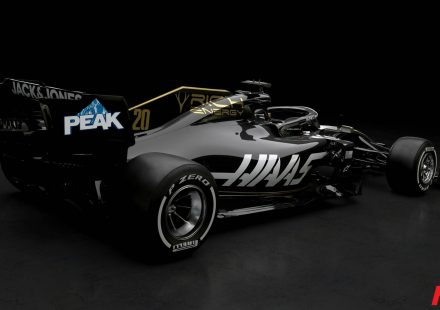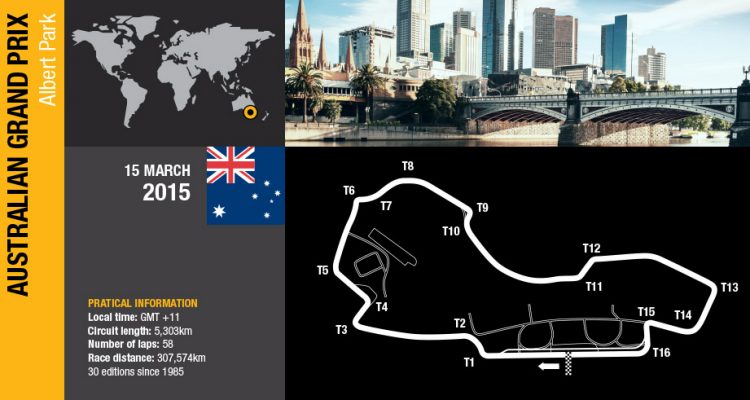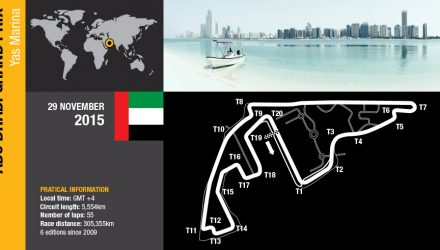RÉMI TAFFIN, DIRECTOR OF OPERATIONS
We go to Melbourne in an optimistic frame of mind. We had very aggressive development and sensible performance targets for the winter and every solution explored so far has been track tested and validated. We have made significant changes to the control systems and hardware, particularly the turbo and ICE. This means that the reliability is improved and the driveability is getting better. We can still progress in this area and we’ve got enough flexibility to move forward with a solid plan of development.
Equally we have some tokens in hand to give even more performance over the year. At this point in time we don’t want to make any prognostics about where we are, but when you compare where we were at the last race of 2014 to this race in Australia, we’re better prepared. We don’t want to talk about wins or points, but obviously we’re hopeful of picking up where we left off and keeping that momentum going.
CYRIL ABITEBOUL, MANAGING DIRECTOR
This year we can genuinely say we are looking forward to the Australian Grand Prix. Last year we went to Melbourne in a very different frame of mind, but in 2015 we are much happier in our own skin. The changes we made over the winter are starting to take root and there is a more confident vibe at Viry. We know that we are the challengers rather than the leaders, but we also know that we have achieved our own objectives over the winter testing.
We set out to make the Power Unit more reliable, which we have done, with over 9,000km covered. We also wanted to improve performance and halve the gap to Mercedes. While it’s more difficult to judge this, our track performance validates our dyno simulations and confirms we are on the right track. We’ve still got a long way to go, but the season is equally long and we’ve still got items up our sleeves to further improve in 2015.
POWER UNIT DETAILS
ICE
Albert Park is one of the toughest circuits of the year for the ICE due to the short bursts of acceleration between turns.
There are 10 periods of acceleration over the lap where the car will go from approximately 150kph to just under 300kph in less than three seconds. The ICE will accordingly go from 9,000rpm to 13,000rpm over these distances.
The full throttle time at Albert Park is 55%, i.e. for 55% of the lap teams will be on the fuel flow limit of the FIA and, in race trim, will be recovering as much as possible from the H.
Large forces run through the engine in the heavy braking zones. The load in Turn 13 is the heaviest ‘stop’ of the circuit. The car brakes from 300kph to 125kph in 2.5secs, generating peaks of 4g, approximately the same forces a jet pilot will encounter.
Fuel consumption per lap is the second highest of the year due to the amount of stop-start periods.
As a temporary track that is only used once a year the track evolves during a race weekend when more rubber is laid down. This affects the drivers’ pedal application as grip levels change, which can also have a noticeable effect on fuel consumption.
TURBOCHARGER
With the majority of corners taken in first to third gear with a period of acceleration straight after, good traction and engine response is key. The turbo will need to be correctly calibrated (or ‘driveable’) to avoid any lag between the driver putting his foot on the gas and the engine kicking in.
Kerbs can be heavily used by the driver to optimize lap time but this can kick-off wheelspin as the tyre loses contact force with the ground – driveability from the turbo and ICE is key to reduce this impact.
The turbo will be working above 100,000rpm by the exit of the corners.
MGU-K
Medium difficulty, although the heavy braking spots will give plenty of opportunity to recover energy lost under braking.
Energy will be harvested from the K in the braking zones for roughly 15% of the lap.
Key points to recover energy will be Turns 3 and 4, the longest period of sustained braking.
MGU-H
The most efficient place to harvest energy is the longest straight when the ICE is at full load. In Australia this is the pit straight.
Heat energy can also be recovered on the curve between Turns 10 and 11, plus those short bursts of acceleration. This can then be fed back into the ICE to further reduce the starting fuel load.
Like the turbo, the MGU-H must be correctly calibrated to give effective power delivery on the exits of the corners and gain crucial tenths of a second.
Correctly mapping the Power Unit to give good power delivery could gain approximately a few tenths of a second over the course of the lap.
RENAULT 2015 FAST FACTS
Australia has an evening qualifying and race. Track temperature drops towards the end of the race on a sunny day which can help with the management of PU temperatures. However, the sunset can affect driver vision.
This season, only four Power Units are permitted per driver as opposed to five in 2014. With one less PU and one extra race, parts need to run over 1,000km more than last year – an increase of 33%! That’s more than double the distance of a return trip from Paris to London.
During the inter-season break, the rate of progress has meant that the PU is over 5% more efficient across its engine speed range than at the last race of 2014. For the same amount of fuel it can provide more power. We are also able to harvest over 25% more power on the H than we were able to at the beginning of 2014. This makes the Renault Energy F1 amongst the most fuel efficient engines in the world.
In another change from last year, in 2015 there is no starting from the pitlane penalty for using an additional power unit. Instead, ten places will be added to a driver’s starting position for the first fifth new part used. If the penalty cannot be fully taken at that event, the remainder of the places will be converted into a time penalty applied at the end of the GP rather than carried forward to the next race.
In addition to trying to secure the F1 lap record in Sunday’s race, Infiniti Red Bull Racing’s Daniil Kvyat will be attempting to set the Albert Park production car lap record. The Russian will be lapping the circuit on Thursday in a Renault Sport Megane R.S. 275 Trophy-R.
2015 will be the 30th F1 race to be held in Australia. Renault currently holds the most amount of victories (8) of all the engine manufacturers in this country.
FOCUS ON… ENGINE TOKENS
2015 is the second year of usage for the revolutionary new Power Units.
The sophisticated power plants feature a turbocharged internal combustion engine and energy recovery systems (an MGU-K and MGU-H), control electronics and a battery to store recovered energy.
When the new engine rules were confirmed, manufacturers agreed to limit development of the units to prevent an arms race and ever increasing costs. They all agreed, however, that the Power Units needed to evolve to take into account changes in the chassis and advancement in technologies. After several discussions a system was born whereby development was banned in-season in year one, but between the 2014 and 2015 seasons manufacturers could change approximately 50% of the units.
With so many different components and sub-systems between manufacturers the question was then how to define what 50% of the Power Unit constitutes.
The answer was a token system. The unit was divided into 66 areas, with a number of tokens allocated to each area. Five out of the 66 tokens are not available for change as they are frozen but an engine manufacturer is able to select 32 token areas, or 48% of the engine, which he would like to change.
Some areas, which are inevitably more complex, have a greater token allocation. For example the combustion area of the ICE (defined as the ports, piston crown, combustion chamber, valves geometry, timing, lift, injector nozzle, coils and spark plugs) are allocated three tokens while the MGU-K power electronics are allocated one token.
Engine manufacturers can choose any combination of tokens to use, provided they do not cash in more than 32 in total. This system has been in place since the new regulations took effect, but in January 2015 it was decided that all tokens did not have to be spent pre-season. Any tokens not used pre-Melbourne can be spent over the course of the year and it then becomes a matter of strategy as to where, how and when the tokens are spent.
As the technology gets more mature next year and beyond there will be fewer and fewer tokens available to spend. In 2016 manufacturers will only be allowed 25 tokens, in 2017 it will be just 20. Consequently less and less of the Power Units will change per year until only minimal changes will occur between seasons. In fact in 2020 it is expected that only 5% of the Power Units will be changed from the previous year.

